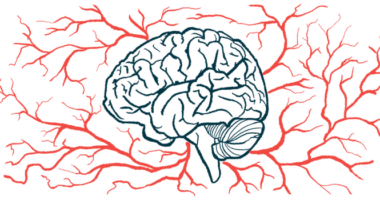ESCAPE, Way of Safely Preparing for Sickle Cell Gene Editing, Advancing
Animal and cell tests support efficacy and safety of conditioning approach

New preclinical data support the ability of the ESCAPE platform, an approach Beam Therapeutics is advancing, to more safely prepare people with sickle cell disease (SCD) for gene-editing treatments now in development.
Notably, these studies represent the first in vivo data for ESCAPE — that is, the experimental platform’s first evaluation in living animals.
“We continue to make important progress with our ESCAPE strategy to improve conditioning regimens for patients ahead of autologous transplant, with a goal of expanding the number of patients who may be able to benefit from our novel therapeutic candidates,” Giuseppe Ciaramella, PhD, Beam’s president and chief scientific officer, said in a company press release.
ESCAPE study findings “provide further evidence of our approach’s potential to enable less toxic pre-transplant conditioning, while minimizing treatment-related toxicities that arise from current busulfan-based conditioning,” Ciaramella added.
Conditioning regimen needed to make room for edited stem cells
SCD is caused by mutations in a gene that’s needed to produce the adult form of hemoglobin, the protein that red blood cells use to carry oxygen through the bloodstream. Gene-editing approaches for SCD generally aim to either “fix” the adult version of the hemoglobin gene, or “turn on” production of an alternative version of the protein, called fetal hemoglobin, which is usually only produced in early fetal development.
Gene-editing approaches for SCD generally target a person’s hematopoietic stem cells (HSCs) — progenitor cells that live in the bone marrow and are able to give rise to mature blood cells. An autologous transplant uses stem cells from the patient rather than a donor.
For these approaches, HSCs are collected and altered in a lab. Before the modified cells are returned to the bone marrow, the patient undergoes a conditioning regimen — using chemotherapy, most commonly busulfan, to wipe out the HSCs currently living in the marrow. Edited HSCs can then be placed in the bone marrow, growing to replace the patient’s HSCs with cells carrying the therapeutic gene edit.
Chemotherapy-based conditioning regimens can be quite toxic, with high rates of unpleasant side effects and risks of more serious health problems. Beam is developing the ESCAPE platform as a less toxic alternative.
Basically, the platform uses antibodies that specifically kill HSCs by sticking to CD117, a protein that’s expressed on the surface of HSCs and is necessary for their normal functions. When HSCs are edited in the lab, in addition to edits targeting hemoglobin, simultaneous alterations make a small change in the structure of CD117, so that the edited cells are immune to these antibodies.
Beam is developing two versions of this platform: ESCAPE-1, which aims to induce fetal hemoglobin production, and ESCAPE-2, which targets the adult version of hemoglobin. Both use the same CD117-altering strategy.
In these preclinical studies, presented across two posters at the 64th ASH Annual Meeting and Exposition, researchers demonstrated that HSCs carrying the altered version of CD117 used in this strategy showed no abnormalities in their function.
In mice, transplanted HSCs with the altered CD117 were able to repopulate the bone marrow just as well as unedited HSCs. In cell and mouse experiments, altered cells were found to be immune to the CD117-targeting antibody, while the antibody effectively depleted unedited cells, as designed.
Results also showed that the CD117 alteration and the hemoglobin-targeting edit could be simultaneously made with high efficiency, with over 80% of cells harboring the therapeutic edit also harboring the altered CD117 version.
Cell studies with the ESCAPE-2 platform have shown this platform has a high efficiency for altering CD117 in therapeutically edited cells, without changing HSC function.
“The latest findings for both ESCAPE-1 and ESCAPE-2 support their continued advancement as treatment approaches for SCD and other hematologic conditions in the future,” Ciaramella said.
Beam is also developing an experimental gene therapy for SCD, called BEAM-101. The company recently began enrolling patients in a Phase 1/2 clinical trial testing the therapy, called BEACON (NCT05456880). The study is enrolling adults with severe SCD, ages 18 to 35, at sites in Massachusetts and Wisconsin.







